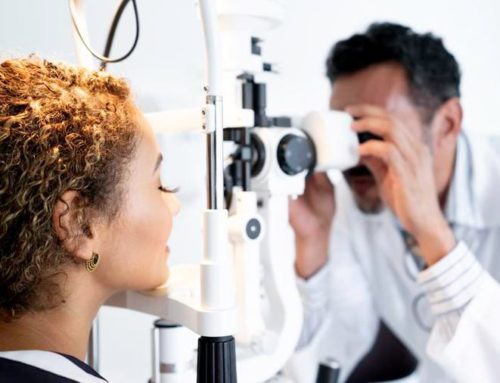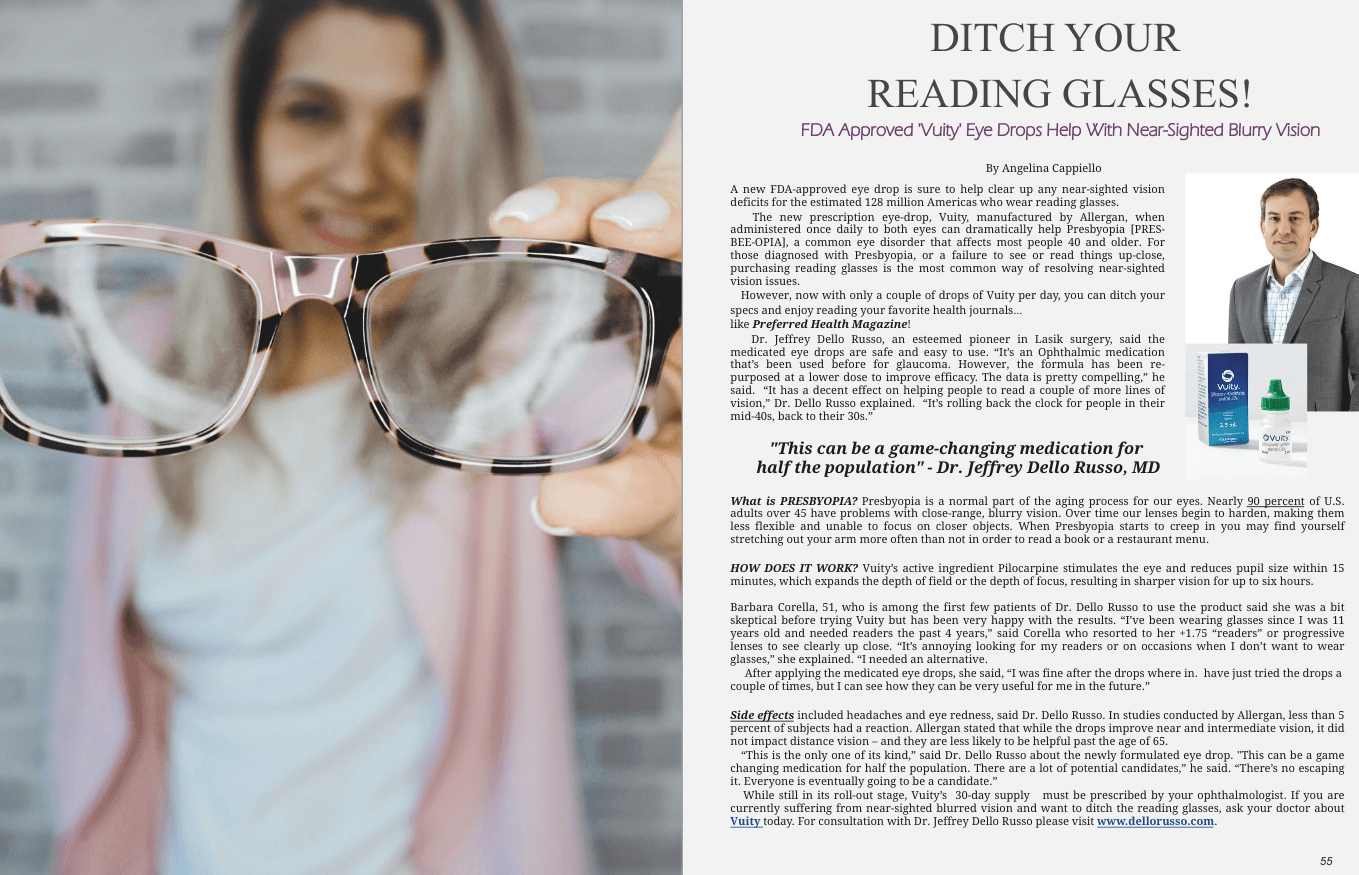Types of Corrective Eye Surgery
Corrective eye surgery has become quite popular. It helps free patients from the daily hassles of glasses and contact lenses. With so many laser and LASIK options now available, how do you know which is the best type of corrective eye surgery? Research estimates that nearly half of all people in the US suffer from some type of vision problem.
If you are part of this statistic and tired of wearing contact lenses and glasses, you may be exploring the possibility of surgery. Here, we’ll explore some of the most popular surgical options and explain why different eyes require different procedures.
LASIK
Without a doubt, the most famous type of corrective laser eye surgery is LASIK, or laser-assisted in-situ keratomileusis. For those with refractive errors like nearsightedness, farsightedness, or astigmatism, LASIK has become the gold-standard procedure. LASIK restores optimal eyesight by creating a corneal flap, allowing the surgeon access to reshape the cornea. Modern LASIK has revolutionized laser eye surgery, offering patients reliable and quick results with minimal pain and shorter recovery times.
However, not everyone is a candidate for LASIK. In order to be a LASIK candidate, you and your eyes need to meet a number of different criteria. Your eye surgeon will do a thorough examination to determine whether LASIK is a good match for you. If you are determined to be a suitable candidate, there are different types of LASIK, such as Bladeless, MonoLASIK, and Epi-LASIK. LASIK can even be used for lazy eye correction if the lazy eye is caused by significantly different refractive errors.

SMILE
SMILE, or small incision lenticule extraction, is a newer laser vision correction procedure used to correct nearsightedness and nearsighted astigmatism. During a SMILE procedure, a surgeon creates a thin contact lens-shaped layer under the surface of the cornea. That layer is then removed through a small opening in the cornea. After the tissues heal together a few days later, vision is clearer. SMILE recovery is faster than LASIK, but it can’t correct farsightedness.
PRK
Before LASIK, there was PRK, or Photorefractive Keratectomy. PRK is similar to LASIK in that it reshapes the cornea to correct vision. However, in PRK the top layer of the cornea is removed altogether rather than making a flap. It’s still a common procedure and, although the recovery time is slightly longer, PRK is often an excellent alternative for those who are unable to have LASIK. A thin cornea, chronic dry eyes, or a high-strength prescription may rule out the possibility of LASIK and make PRK the better option.
LASEK
LASEK, or laser epithelial keratomileusis, is similar to LASIK in that a corneal flap is created in order to allow the eye surgeon access to the deeper layers of the cornea. The cornea is then reshaped with a laser to correct vision. In LASEK, the corneal flap is thinner than in LASIK and only involves the epithelium, making it somewhat similar to PRK. Unlike PRK, the flap is then put back in place and a bandage contact lens is placed over the flap to facilitate healing.
LASEK may be a better option than LASIK if you have a high degree of nearsightedness, or if you’re likely to dislodge the thicker corneal flap. However, it’s typically more uncomfortable than LASIK with a longer recovery time than both LASIK and PRK.
Non-laser surgery
With so much emphasis on laser eye surgery, it’s often forgotten that there are non-laser-assisted procedures available. For some common eye problems, the best corrective eye surgery is laser-free. The following are all common non-laser assisted procedures.
Conductive Keratoplasty
Conductive Keratoplasty is a non-invasive method that uses a probe and low-heat radio waves to correct vision. It’s also occasionally used to enhance eyesight in people who have had cataract surgery or even LASIK.
Phakic intraocular lens implants
These lens implants are used to correct the vision of patients with moderate to high nearsightedness, but don’t qualify for LASIK. The natural lens is left untouched and a clear, implantable lens is inserted between the iris and cornea. This helps light focus correctly on the retina to improve vision.
Refractive lens exchange surgery
This is another non-laser surgery, this time for correcting presbyopia, severe farsightedness, or cataracts. The eye’s problematic natural lens is removed completely, and an artificial one is inserted in its place.
Corrective eye surgery cost
Determining your corrective eye surgery cost will depend on several different factors. The cost of your procedure will depend on:
- Your prescription and the amount of correction required
- The technology used for your procedure
- Your eye surgeon’s experience
- Whether or not it is a custom procedure
Generally speaking, the greater your prescription, the more correction you’ll need and the more your eye surgery will cost. In addition, if your surgeon uses the latest technology, it may also increase your costs. Last but not least, more experienced surgeons typically cost more as you’re paying for that expertise.
However, it can be helpful to remember that in this case, a higher cost also typically translates to better results. If you want the most precise procedure, you are going to want a highly experienced surgeon who uses state-of-the-art technology. You’ll also get the best results from a procedure that is customized to your unique eyes and vision needs.
While you may pay a bit more for this type of surgery, you can also rest easy knowing that you’ll get great results. This is your eyesight, afterall, so it’s worth paying a little more for excellent vision results. If you need financing assistance, talk to your provider to see what eye surgery financing plans are available to you.
So, what’s the best type of eye surgery for you?
Every individual has different eyes. So, the best type of corrective eye surgery is the one specified by your eye surgeon after a thorough exam and consultation. There are a number of different criteria that need to be taken into consideration, including:
- Your prescription
- Your overall health
- Pre-existing eye conditions
- The thickness of your cornea
After taking all of this into account, your eye surgeon can work with you to determine the best eye surgery to improve your vision. It might not be the procedure you initially considered. However, if you’ve worked hard to find an expert eye surgeon, you can trust that they’ll suggest the procedure that’s likely to provide the best vision outcomes for you.
It’s also helpful to keep in mind that technology is constantly changing and improvements are being made to procedures all the time. Even if you’re not a candidate for LASIK, PRK, or any other kind of laser eye surgery you were hoping for at this time, you could be in future. Similarly, if you’ve been told you weren’t a candidate in the past, it’s always worth another exam and consultation to see if you might be now.
Dello Russo Laser Vision can help you
If you’ve decided you’re ready to discard your glasses or contact lenses, make an appointment to visit us at Dello Russo Laser Vision. Whether you’re in need of lazy eye correction, cross-eye correction, or a solution to your nearsightedness, farsightedness, or astigmatism, we can help. Let our world class eye surgeons recommend the best corrective eye surgery for you at our locations in NY, NJ, Brooklyn, Manhattan and Long Island.
Ready to change your life? Get LASIK eye surgery or another laser procedure and improve your vision. Give us a call and save up to 20% off LASIK. Call today, and you’ll get an additional $400 off! Learn more by contacting us now. We look forward to helping you.
Sources:
https://www.allaboutvision.com/visionsurgery/faq-lazy-eye.htm
https://www.nvisioncenters.com/laser-surgery/




